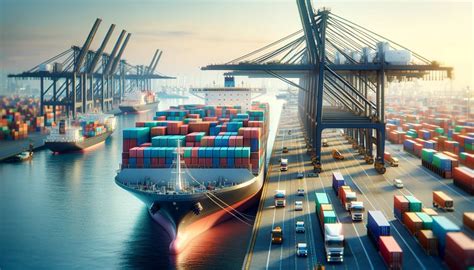
Emirates President Sir Tim Clark warns that tariffs, strained supply chains, and ongoing issues with Boeing are negatively impacting the airline’s operations and profitability, presenting significant challenges to the aviation industry’s recovery.
Emirates, one of the world’s largest international airlines, is grappling with a complex web of challenges, ranging from the impact of tariffs to persistent supply chain disruptions and continued setbacks related to Boeing aircraft deliveries. Sir Tim Clark, President of Emirates, articulated these concerns in a recent interview, highlighting the multifaceted pressures facing the airline and the broader aviation sector.
“Tariffs are a problem,” Clark stated unequivocally, emphasizing the direct financial impact of increased import duties and trade barriers on the airline’s bottom line. While he did not specify the exact tariffs impacting Emirates, the escalating trade tensions between major economies, particularly the United States and China, have resulted in increased costs for various components and services essential to aircraft maintenance and operations. These tariffs, according to Clark, add to the existing financial burden and complicate efforts to maintain competitive pricing.
Beyond tariffs, Emirates is also contending with significant disruptions in global supply chains. These disruptions, exacerbated by geopolitical instability, the COVID-19 pandemic, and logistical bottlenecks, have affected the availability of essential parts and components needed for aircraft maintenance and repairs. Clark noted that the scarcity of certain parts has led to longer turnaround times for maintenance, grounding aircraft for extended periods and impacting the airline’s operational efficiency. “Supply chains are strained, really strained,” he emphasized, underscoring the severity of the situation. This strain not only increases costs but also affects the airline’s ability to meet its flight schedules and maintain its high standards of service.
Adding to Emirates’ woes are the ongoing issues with Boeing, one of the world’s leading aircraft manufacturers. Clark expressed frustration with the delays in the delivery of Boeing’s 777X aircraft, a next-generation wide-body jet that Emirates had anticipated would form a key part of its future fleet. The 777X program has faced numerous setbacks, including engine issues and regulatory hurdles, pushing back the delivery timeline by several years. “Boeing…well, we all know the problems there,” Clark remarked, alluding to the well-documented challenges facing the aircraft manufacturer. These delays have forced Emirates to reassess its fleet renewal plans and extend the lifespan of its existing aircraft, incurring additional maintenance costs and potentially impacting fuel efficiency.
The combined impact of tariffs, supply chain disruptions, and Boeing delays presents a formidable challenge for Emirates, requiring the airline to adapt its strategies and explore alternative solutions to mitigate the negative effects. The situation also underscores the interconnectedness of the global aviation industry and the vulnerability of airlines to external factors beyond their direct control.
Tariff Impact in Detail
The imposition of tariffs on various goods and services related to the aviation industry has a direct and tangible impact on Emirates’ operational costs. These tariffs can affect a wide range of items, from aircraft components and maintenance materials to fuel and other essential supplies. For example, if the United States imposes tariffs on aircraft parts imported from Europe, Emirates, which operates a significant number of Airbus aircraft, may face higher maintenance costs. Similarly, tariffs on fuel can increase the airline’s operating expenses, making it more challenging to offer competitive fares.
Clark’s statement that “tariffs are a problem” highlights the airline’s concern over the increasing protectionist measures adopted by various countries. These measures not only increase costs but also create uncertainty in the global market, making it difficult for airlines to plan their long-term strategies. The impact of tariffs is particularly significant for airlines like Emirates, which operate a large international network and rely on global supply chains for their operations.
Emirates is likely exploring various strategies to mitigate the impact of tariffs, such as diversifying its sourcing of goods and services, negotiating favorable terms with suppliers, and hedging against currency fluctuations. However, these strategies may not fully offset the negative effects of tariffs, and the airline may ultimately need to pass some of the increased costs on to its customers through higher fares or surcharges.
Supply Chain Strain Analysis
The COVID-19 pandemic has exposed the fragility of global supply chains, leading to widespread disruptions in the availability of goods and services across various industries. The aviation industry has been particularly affected, with shortages of essential parts and components causing delays in aircraft maintenance and repairs.
Clark’s assertion that “supply chains are strained, really strained” reflects the severity of the challenges facing Emirates in procuring the necessary materials to keep its aircraft flying. The disruptions in supply chains can be attributed to several factors, including:
- Factory Closures: Lockdowns and other restrictions imposed during the pandemic led to the temporary closure of factories and manufacturing facilities around the world, disrupting the production and supply of aircraft parts.
- Logistical Bottlenecks: Restrictions on international travel and trade caused significant delays in the transportation of goods, leading to bottlenecks at ports and airports.
- Labor Shortages: The pandemic also resulted in labor shortages in various sectors, including manufacturing and logistics, further exacerbating the disruptions in supply chains.
- Geopolitical Instability: Events such as the war in Ukraine have further strained supply chains, especially impacting availability and costs of materials like titanium, which is essential in aircraft manufacturing.
The impact of supply chain disruptions on Emirates is multifaceted. It can lead to:
- Increased Maintenance Costs: The scarcity of parts can drive up prices, increasing the cost of aircraft maintenance and repairs.
- Aircraft Groundings: Delays in the availability of parts can force airlines to ground aircraft for extended periods, reducing their operational capacity.
- Flight Cancellations and Delays: Supply chain disruptions can also lead to flight cancellations and delays, disrupting travel plans for passengers.
- Reduced Operational Efficiency: The overall impact of supply chain disruptions is a reduction in operational efficiency, which can affect the airline’s profitability.
To address these challenges, Emirates is likely working closely with its suppliers to identify alternative sources of parts and components, optimizing its maintenance schedules, and investing in inventory management systems. However, the airline may also need to adjust its flight schedules and capacity to account for the ongoing disruptions in supply chains.
Boeing 777X Delays: A Deeper Dive
The delays in the delivery of Boeing’s 777X aircraft represent a significant setback for Emirates, which had planned to use the next-generation wide-body jet to replace its aging fleet of Boeing 777s. The 777X program has faced numerous challenges, including:
- Engine Issues: The General Electric GE9X engine, which is designed to power the 777X, has experienced technical issues that have delayed the aircraft’s certification.
- Regulatory Hurdles: The 777X has faced increased scrutiny from aviation regulators following the crashes of Boeing 737 MAX aircraft, further delaying its certification process.
- Production Delays: Boeing has also experienced production delays due to supply chain disruptions and other factors, pushing back the delivery timeline for the 777X.
Clark’s comment that “Boeing…well, we all know the problems there” reflects the frustration within Emirates over the continued delays in the 777X program. These delays have forced the airline to:
- Extend the Lifespan of Existing Aircraft: Emirates has had to extend the lifespan of its existing Boeing 777s, incurring additional maintenance costs and potentially impacting fuel efficiency.
- Reassess Fleet Renewal Plans: The delays in the 777X program have forced Emirates to reassess its fleet renewal plans and explore alternative aircraft options.
- Adjust Capacity and Schedules: Emirates may need to adjust its capacity and schedules to account for the delayed arrival of the 777X.
The delays in the 777X program also have broader implications for the aviation industry. They underscore the challenges facing aircraft manufacturers in developing and certifying new aircraft, and they highlight the importance of rigorous safety standards and regulatory oversight.
Emirates has a long-standing relationship with Boeing, and the airline remains committed to the 777X program. However, the continued delays have undoubtedly strained the relationship, and Emirates is likely exploring other options to meet its future fleet needs. This may include considering Airbus aircraft, such as the A350, as a potential alternative to the 777X.
Emirates’ Strategic Response
Faced with the combined challenges of tariffs, supply chain disruptions, and Boeing delays, Emirates is likely implementing a range of strategies to mitigate the negative impacts and ensure its long-term sustainability. These strategies may include:
- Cost Optimization: Emirates is likely focusing on cost optimization across its operations, identifying areas where it can reduce expenses without compromising safety or service quality. This may involve renegotiating contracts with suppliers, streamlining processes, and improving efficiency.
- Revenue Enhancement: Emirates may also be exploring opportunities to enhance its revenue, such as increasing fares on certain routes, offering new ancillary services, and expanding its cargo operations.
- Fleet Management: Emirates is carefully managing its fleet, extending the lifespan of existing aircraft while exploring options for new aircraft acquisitions. This may involve leasing aircraft, purchasing used aircraft, or placing orders for new aircraft from Airbus or Boeing.
- Partnerships and Alliances: Emirates may also be strengthening its partnerships and alliances with other airlines to expand its network and offer more seamless travel options to its customers.
- Technological Innovation: Emirates is investing in technological innovation to improve its operational efficiency, enhance the passenger experience, and reduce its environmental impact. This may involve implementing new software systems, adopting advanced maintenance techniques, and exploring the use of sustainable aviation fuels.
- Government Relations: Emirates is actively engaging with governments and regulators to advocate for policies that support the aviation industry and address the challenges facing airlines. This may involve lobbying for reduced tariffs, streamlined regulations, and investments in infrastructure.
By implementing these strategies, Emirates aims to navigate the current challenges and position itself for continued growth and success in the future. The airline’s strong brand, extensive network, and commitment to quality service provide a solid foundation for overcoming the obstacles it faces.
The Broader Aviation Industry Context
The challenges facing Emirates are not unique to the airline. The entire aviation industry is grappling with the impact of tariffs, supply chain disruptions, and aircraft delays. These challenges are compounded by other factors, such as rising fuel prices, increased competition, and evolving passenger expectations.
The global aviation industry is highly interconnected, and disruptions in one part of the world can have ripple effects across the entire system. The COVID-19 pandemic has highlighted the vulnerability of the industry to external shocks, and airlines are now more aware of the need to build resilience and adapt to changing circumstances.
To overcome these challenges, the aviation industry needs to:
- Strengthen Supply Chains: Airlines and aircraft manufacturers need to work together to strengthen supply chains and ensure the availability of essential parts and components. This may involve diversifying sourcing, investing in inventory management systems, and building closer relationships with suppliers.
- Promote Sustainable Aviation: The aviation industry needs to accelerate its efforts to reduce its environmental impact by investing in sustainable aviation fuels, developing more fuel-efficient aircraft, and implementing operational improvements.
- Enhance Collaboration: Airlines, airports, governments, and regulators need to enhance collaboration to address the challenges facing the industry and ensure the safety and efficiency of air travel.
- Embrace Technological Innovation: The aviation industry needs to embrace technological innovation to improve its operational efficiency, enhance the passenger experience, and reduce its costs.
By working together, the aviation industry can overcome the current challenges and build a more sustainable and resilient future. The industry plays a vital role in connecting people and businesses around the world, and its continued success is essential for global economic growth and development.
Impact on Passengers
The challenges faced by Emirates and the broader aviation industry inevitably impact passengers. These impacts can manifest in various ways:
- Higher Fares: Increased operational costs due to tariffs, supply chain disruptions, and rising fuel prices can lead to higher fares for passengers. Airlines may need to pass on some of these costs to maintain profitability.
- Flight Cancellations and Delays: Supply chain disruptions and aircraft maintenance issues can result in flight cancellations and delays, disrupting travel plans for passengers.
- Reduced Service Levels: Airlines may need to reduce service levels, such as cutting back on complimentary meals or reducing baggage allowances, to offset increased costs.
- Fewer Route Options: Airlines may need to consolidate routes or reduce the frequency of flights on certain routes due to aircraft shortages or reduced demand.
- Less Comfortable Travel Experience: As airlines extend the lifespan of existing aircraft, passengers may experience a less comfortable travel experience due to older cabins and outdated amenities.
To mitigate the impact on passengers, airlines are likely to:
- Communicate Transparently: Airlines should communicate transparently with passengers about potential flight disruptions and delays, providing timely updates and offering alternative travel options.
- Offer Flexible Booking Options: Airlines should offer flexible booking options, allowing passengers to change or cancel their flights without penalty.
- Provide Compensation for Delays: Airlines should provide compensation to passengers for significant flight delays, as required by regulations.
- Maintain High Safety Standards: Airlines must prioritize safety above all else, ensuring that all aircraft are properly maintained and that all flights are operated in accordance with the highest safety standards.
Passengers can also take steps to minimize the impact of these challenges on their travel plans. This may involve:
- Booking Flights in Advance: Booking flights well in advance can often result in lower fares and a wider selection of flight options.
- Purchasing Travel Insurance: Purchasing travel insurance can protect passengers against unexpected travel disruptions, such as flight cancellations and delays.
- Being Flexible with Travel Dates: Being flexible with travel dates can help passengers avoid peak travel times and potentially find lower fares.
- Checking Flight Status Regularly: Checking flight status regularly can help passengers stay informed about potential delays or cancellations.
By working together, airlines and passengers can navigate the current challenges and ensure a smooth and enjoyable travel experience.
Looking Ahead: Future Challenges and Opportunities
The aviation industry is facing a period of unprecedented change and uncertainty. In addition to the challenges discussed above, the industry is also grappling with other issues, such as:
- The Rise of Low-Cost Carriers: The rise of low-cost carriers is putting pressure on traditional airlines to reduce their costs and offer more competitive fares.
- Changing Passenger Expectations: Passengers are increasingly demanding personalized and seamless travel experiences, requiring airlines to invest in new technologies and services.
- Geopolitical Instability: Geopolitical instability, such as conflicts and political tensions, can disrupt air travel and impact airline profitability.
- Cybersecurity Threats: Airlines are facing increasing cybersecurity threats, requiring them to invest in robust security measures to protect their data and systems.
Despite these challenges, the aviation industry also has significant opportunities for growth and innovation. These opportunities include:
- Emerging Markets: Emerging markets, such as Asia and Africa, are experiencing rapid economic growth and increasing demand for air travel.
- Technological Advancements: Technological advancements, such as artificial intelligence, blockchain, and the Internet of Things, can help airlines improve their operational efficiency, enhance the passenger experience, and reduce their costs.
- Sustainable Aviation: The growing focus on sustainability is creating new opportunities for airlines to invest in sustainable aviation fuels, develop more fuel-efficient aircraft, and implement operational improvements.
- Space Tourism: The emerging space tourism industry has the potential to revolutionize air travel and create new revenue streams for airlines.
To capitalize on these opportunities, airlines need to:
- Embrace Innovation: Airlines need to embrace innovation and invest in new technologies and services to meet the evolving needs of passengers and improve their operational efficiency.
- Focus on Customer Experience: Airlines need to focus on providing a personalized and seamless travel experience for passengers, from booking to arrival.
- Build Strategic Partnerships: Airlines need to build strategic partnerships with other airlines, technology companies, and travel providers to expand their network and offer more comprehensive travel solutions.
- Adapt to Changing Market Conditions: Airlines need to be flexible and adaptable, responding quickly to changing market conditions and adjusting their strategies as needed.
By embracing these strategies, airlines can navigate the challenges and capitalize on the opportunities that lie ahead, ensuring a bright future for the aviation industry.
FAQ Section
1. What are the primary challenges Emirates is currently facing, according to Sir Tim Clark?
Emirates President Sir Tim Clark highlights three main challenges: the impact of tariffs, strained supply chains, and ongoing issues related to Boeing aircraft deliveries, particularly delays with the 777X program.
2. How do tariffs specifically impact Emirates’ operations?
Tariffs increase the cost of imported goods and services essential for aircraft maintenance and operations, such as aircraft components, maintenance materials, and potentially fuel. This adds to the airline’s financial burden and complicates efforts to maintain competitive pricing.
3. What are the main reasons behind the strain on supply chains affecting Emirates?
The strain on supply chains is attributed to factors such as factory closures due to the COVID-19 pandemic, logistical bottlenecks caused by travel and trade restrictions, labor shortages, and geopolitical instability impacting the availability of crucial materials.
4. What specific issues are causing delays in the delivery of the Boeing 777X aircraft to Emirates?
Delays in the 777X program are due to engine issues with the General Electric GE9X engine, increased regulatory scrutiny following the 737 MAX crashes, and production delays caused by supply chain disruptions and other factors.
5. How might these challenges ultimately affect passengers flying with Emirates?
Passengers may experience higher fares due to increased operational costs, potential flight cancellations and delays due to supply chain issues and aircraft maintenance, reduced service levels as airlines try to cut costs, and potentially a less comfortable travel experience as airlines extend the lifespan of older aircraft.









